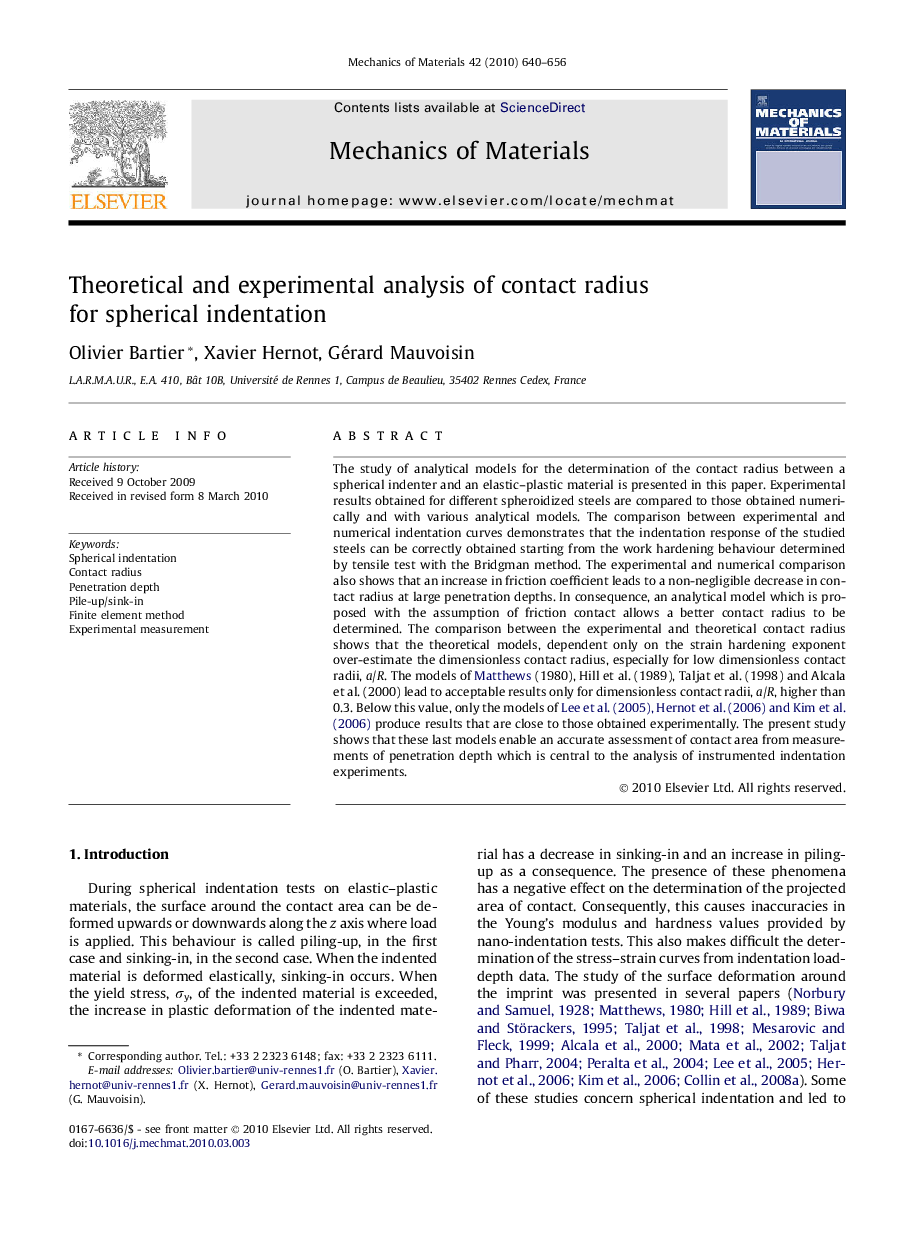| Article ID | Journal | Published Year | Pages | File Type |
|---|---|---|---|---|
| 800485 | Mechanics of Materials | 2010 | 17 Pages |
The study of analytical models for the determination of the contact radius between a spherical indenter and an elastic–plastic material is presented in this paper. Experimental results obtained for different spheroidized steels are compared to those obtained numerically and with various analytical models. The comparison between experimental and numerical indentation curves demonstrates that the indentation response of the studied steels can be correctly obtained starting from the work hardening behaviour determined by tensile test with the Bridgman method. The experimental and numerical comparison also shows that an increase in friction coefficient leads to a non-negligible decrease in contact radius at large penetration depths. In consequence, an analytical model which is proposed with the assumption of friction contact allows a better contact radius to be determined. The comparison between the experimental and theoretical contact radius shows that the theoretical models, dependent only on the strain hardening exponent over-estimate the dimensionless contact radius, especially for low dimensionless contact radii, a/R. The models of Matthews, 1980, Hill et al., 1989, Taljat et al., 1998 and Alcala et al., 2000 lead to acceptable results only for dimensionless contact radii, a/R, higher than 0.3. Below this value, only the models of Lee et al., 2005, Hernot et al., 2006 and Kim et al., 2006 produce results that are close to those obtained experimentally. The present study shows that these last models enable an accurate assessment of contact area from measurements of penetration depth which is central to the analysis of instrumented indentation experiments.
